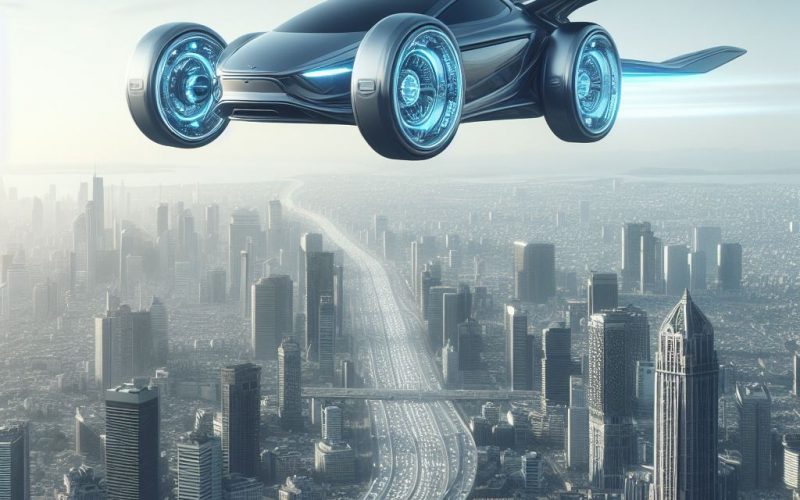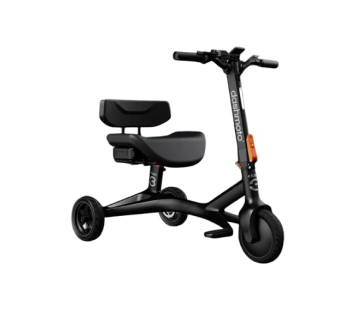In a world where technology is advancing at an unprecedented rate, the idea of futuristic flying cars no longer seems like a far-fetched concept in science fiction movies. With developments and innovations pushing boundaries nonstop, the possibility of flying cars becoming a reality is becoming increasingly real daily.
This article explores the exciting world of futuristic flying cars by keeping up with the latest developments in the field and exploring their potential impact on transportation.
Table of Contents
Developments and innovations
The field of transportation is undergoing a revolutionary transformation, with engineers and innovators focusing their efforts on developing futuristic flying cars that could revolutionize how we commute. From autonomous drones to electric vertical takeoff and landing (eVTOL) aircraft, the skies are poised to become the new highways of the future. These developments not only promise faster and more efficient travel but also hold the potential to alleviate traffic congestion in urban areas.
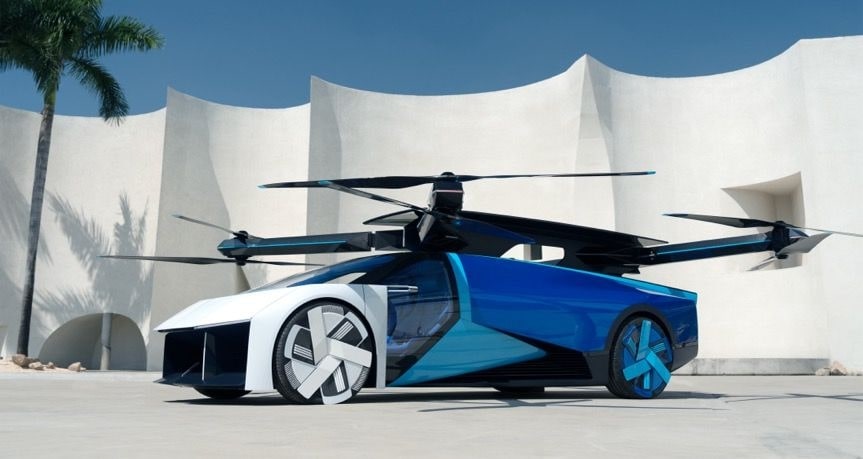
But for those who crave a bit more control, electric vertical takeoff and landing (eVTOL) aircraft are another exciting development. These beauties combine a helicopter's flexibility with an airplane's efficiency. Imagine effortlessly taking off from a rooftop landing pad in your personal eVTOL, soaring over the city skyline, and landing at your destination with the grace of a bird. Talk about an executive commute!
These advancements aren't just about convenience, though. Flying cars have the potential to revolutionize urban planning. Traffic congestion, a daily urban nightmare, could become a thing of the past. Imagine cities designed with designated air lanes for flying cars, reducing the need for sprawling road networks and freeing up valuable real estate for parks and green spaces.
Of course, challenges remain. Safety regulations must be meticulously crafted to ensure safe skies for flying car operators and everyone below. Noise pollution is another concern that needs to be addressed. But with every innovation, engineers are tackling these hurdles head-on.
The future of flying cars is brimming with possibilities. It's not just about reaching your destination faster; it's about reimagining the fabric of our cities and how we travel. Who knows, maybe our grandkids will look back at our commutes and chuckle, wondering why we ever spent hours crawling through traffic when we could have been soaring through the sky!
7 futuristic flying cars
SkyHopper
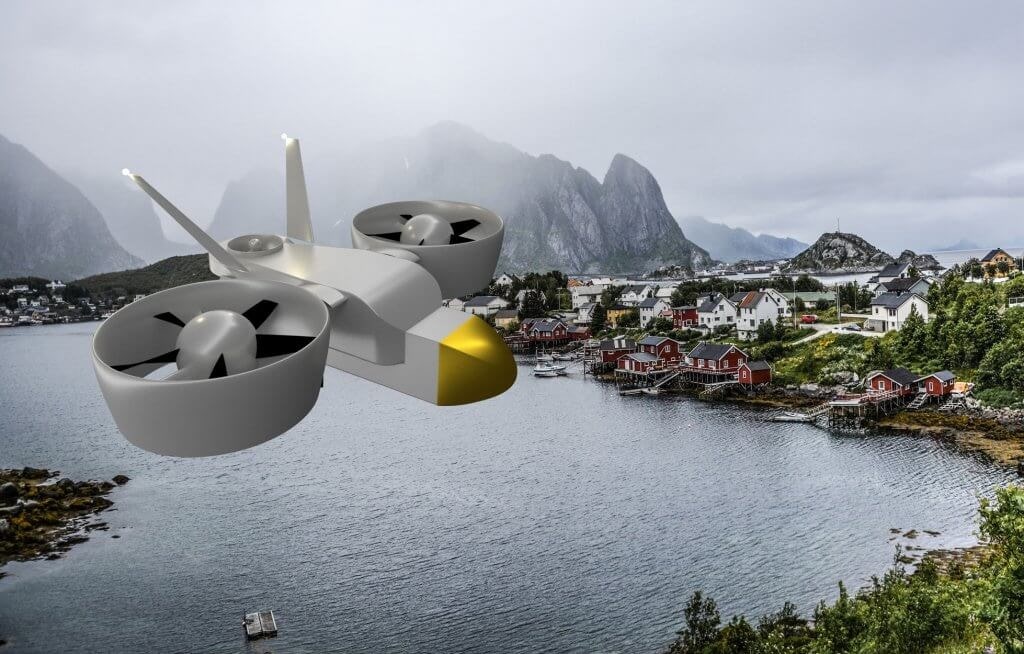
The SkyHopper is a cutting-edge eVTOL aircraft that transports passengers seamlessly between urban destinations. Powered by electric motors and equipped with advanced navigation systems, this futuristic flying car is set to redefine urban mobility.
The SkyHopper features a sleek, aerodynamic design that enables vertical takeoff and landing, eliminating the need for traditional runways. Its spacious interior can accommodate up to four passengers, providing a comfortable and luxurious travel experience.
The SkyHopper, by taking to the skies, has the potential to ease traffic congestion in crowded urban areas. By bypassing congested roads and reaching destinations quickly, this flying car offers a practical solution to modern transportation challenges.
The Transitioning Titan – TF-X
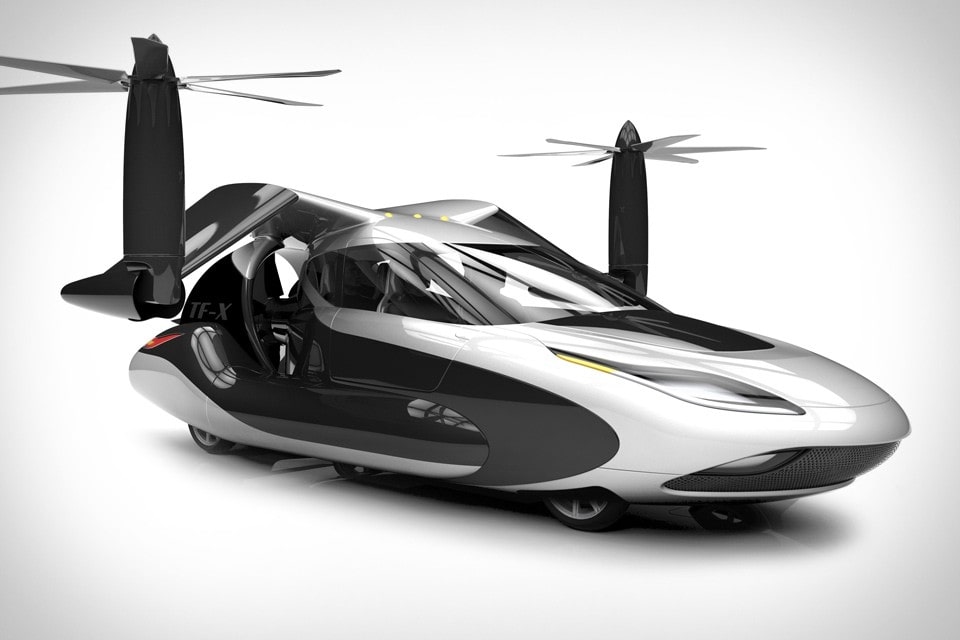
Imagine a car that transforms like a superhero with the press of a button. The TF-X is a futuristic flying car transforming from a sleek road machine into a powerful aircraft. Picture yourself cruising down the highway, then pulling over and extending the wings for a vertical takeoff.
Talk about a conversation starter at the next red light! This flying car concept boasts supersonic speeds and luxurious interiors, making long-distance travel a breeze (or, should we say, a sonic boom?).
The Personal Pod – Aurora
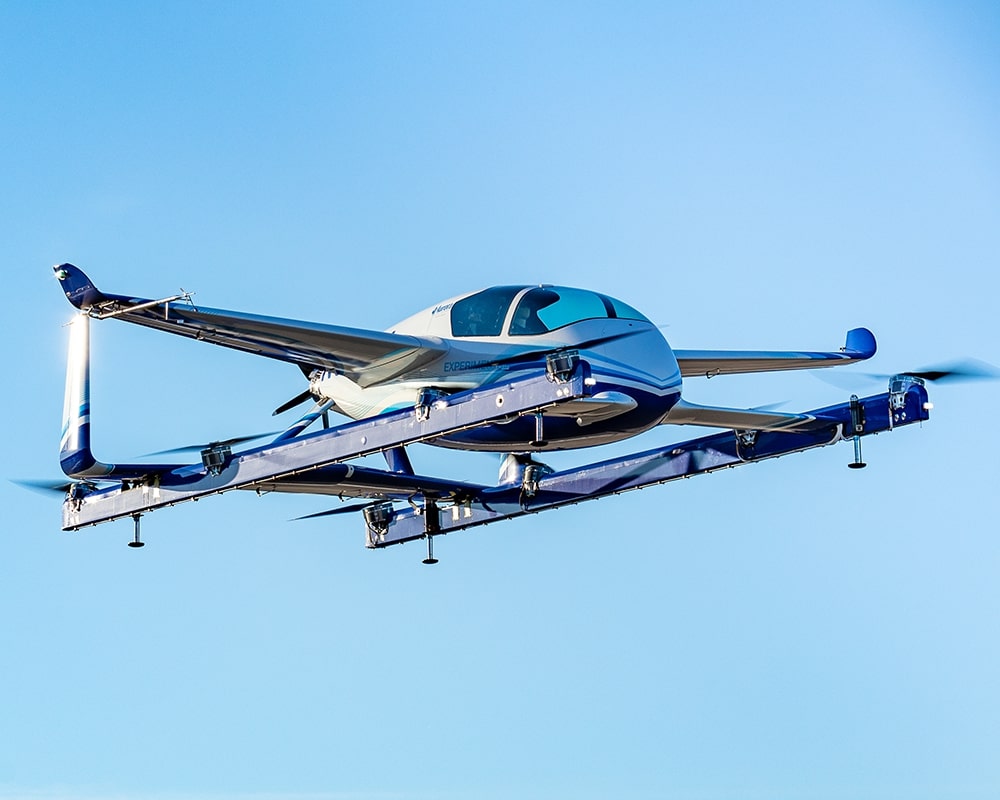
Forget battling for parking spaces – Aurora envisions a world of personalized flying pods that land vertically on designated platforms.
These compact electric marvels are designed for single occupancy, offering a quiet and efficient way to zip around the city. Imagine zipping through the air in your own private pod, catching a breathtaking aerial view of the city as you navigate your daily errands.
The Aurora concept tackles urban congestion in a new way, promoting a future where personal transportation is both eco-friendly and convenient.
The Luxury Hovercar – The PAL-V Liberty
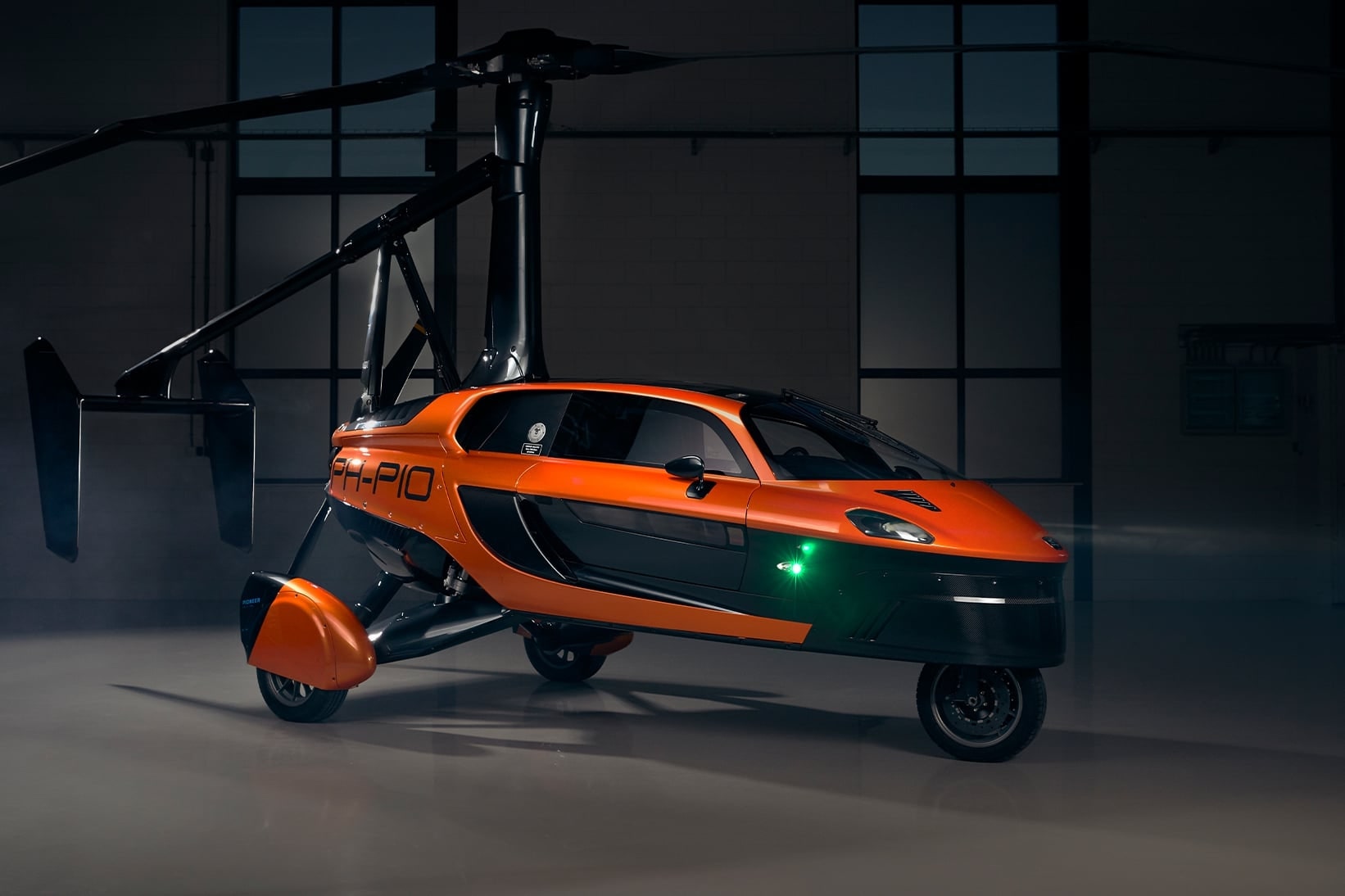
Picture yourself gliding silently above the city in a luxurious flying machine that looks like it's straight out of a sci-fi movie. The PAL-V Liberty isn't just a concept – it's a flying car that's already received certification and is ready for pre-order (if your bank account can handle the hefty price tag).
This beauty combines a car's comfort with a helicopter's maneuverability, allowing for vertical takeoffs and landings. Imagine landing your flying car on your rooftop helipad – the ultimate symbol of futuristic living!
The Modular Marvel – The BlackFly
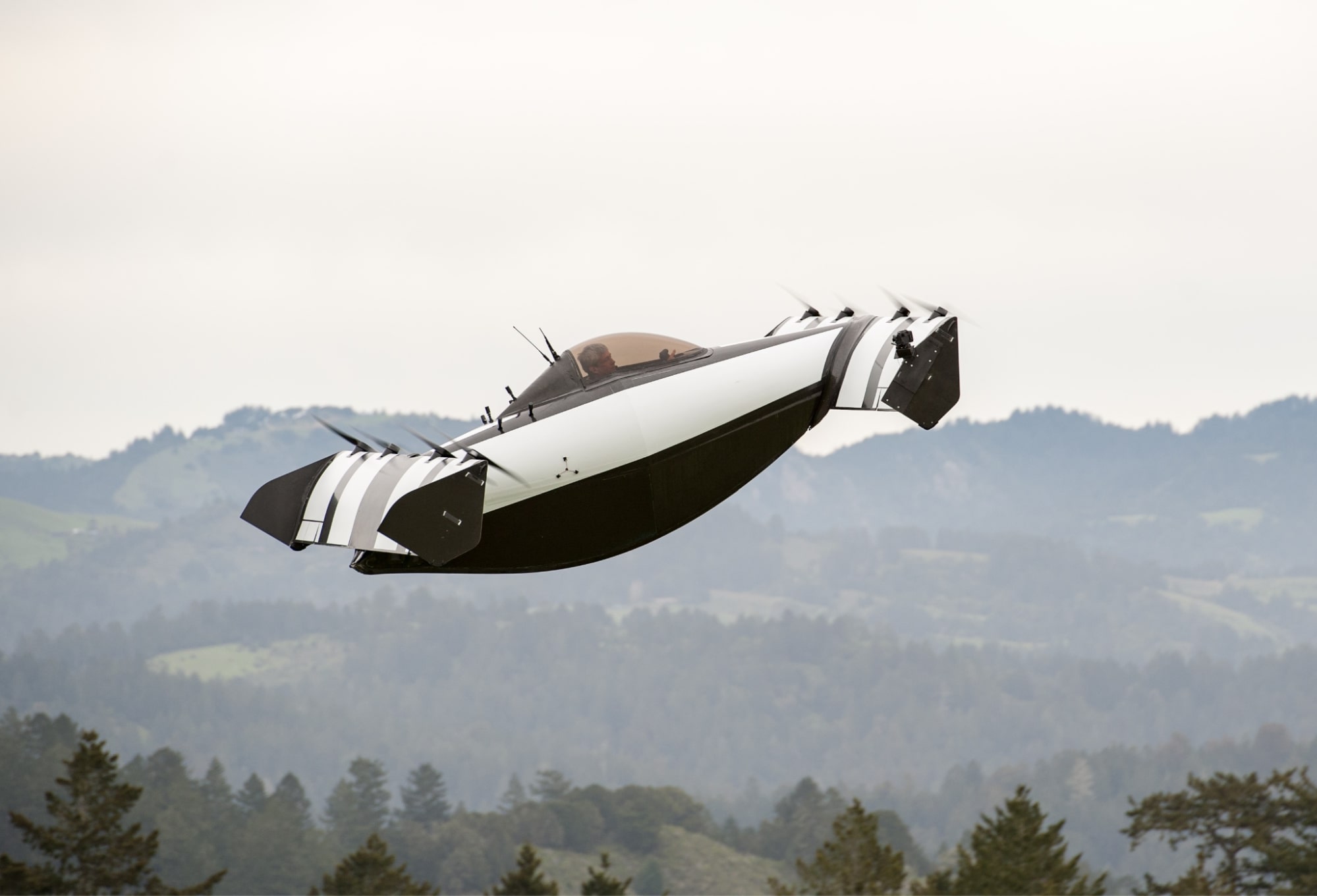
Imagine a flying car that can adapt to your needs. The BlackFly is a modular concept that allows for interchangeable passenger cabins. Need a quick solo trip across town? Pop in the single-seater pod.
Planning a weekend getaway with friends? Attach the multi-passenger module and take off! This flying car concept offers ultimate flexibility and caters to various travel scenarios.
The Folding Flyer – The Stratolaunch Manta
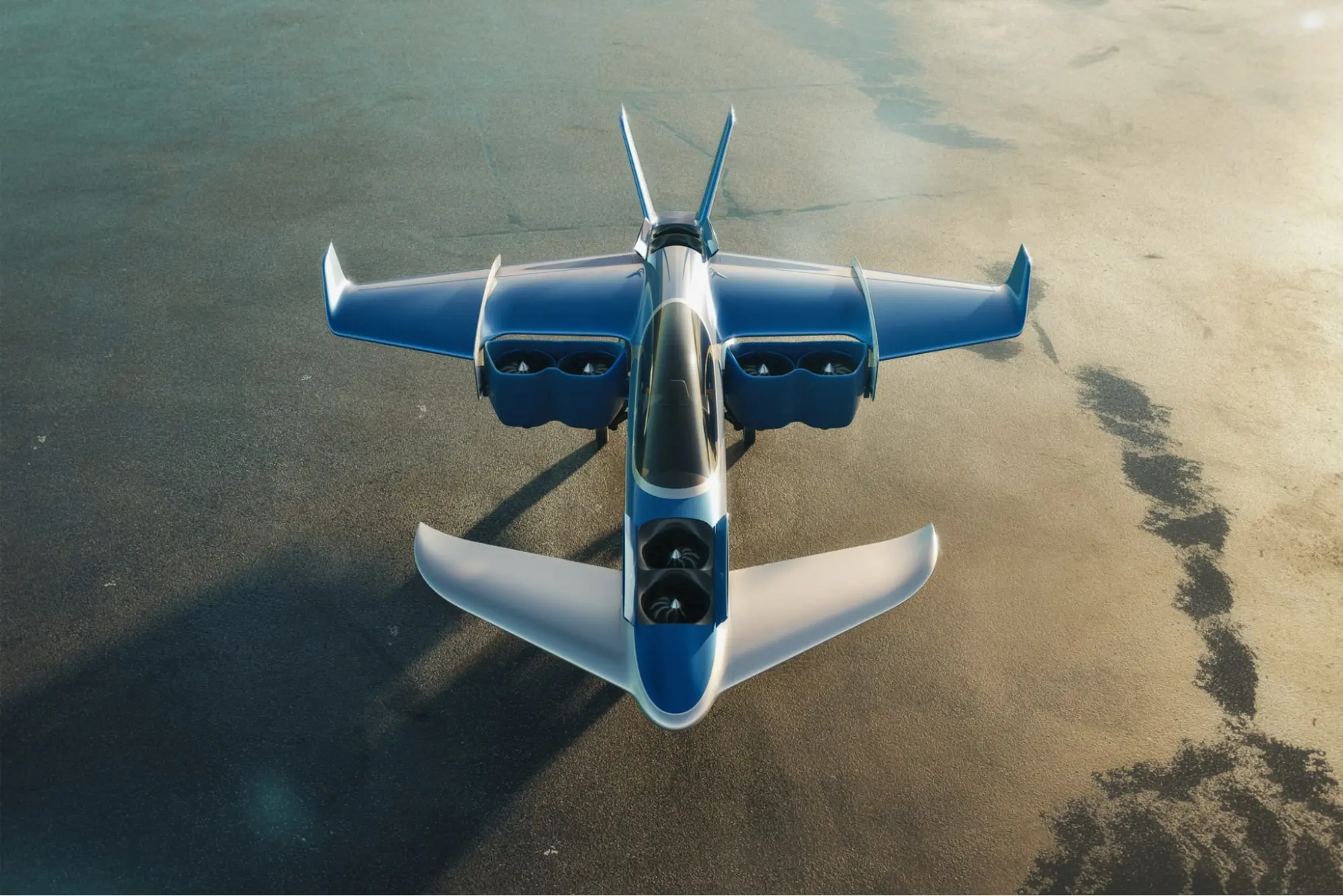
Picture a massive carrier aircraft launching individual flying cars like a mother bird releasing its young.
The Stratolaunch Manta concept takes a unique approach. Instead of individual vehicles taking off vertically, these sleek flying cars are carried aloft by a giant mothership and then released for their final destinations.
This could be a revolutionary solution for long-distance travel, offering a comfortable and efficient way to cover vast distances.
The Eco-Friendly Flyer – The CityAirbus
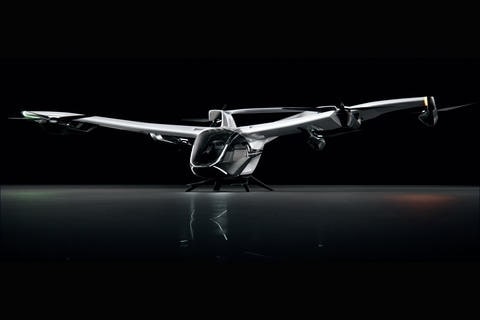
Sustainability is a major concern in transportation. The CityAirbus concept tackles this head-on by envisioning a network of electric, autonomous flying taxis.
Imagine a world where you hail a flying taxi from your phone, similar to how you order a ride-sharing service today.
These eco-friendly flying machines would glide silently through the air, reducing noise pollution and traffic congestion in urban areas.
The Road Ahead: Challenges and Opportunities for Flying Cars
The future of flying cars gleams with possibility, but before we trade in our car keys for joysticks, there are some crucial moments to overcome. This isn't just about designing sleek vehicles – it's about rewriting the rules of the road (or rather, the sky).
Regulatory Red Tape: Untangling the Knots in the Sky
Imagine a world where airspace regulations are as complex as deciphering a tax code. That's the potential scenario if we don't carefully navigate the regulatory hurdles. Integrating flying cars into existing airspace requires a complete overhaul of regulations. Air traffic control systems need an upgrade to handle the influx of flying vehicles, and safety protocols have to be meticulously crafted to prevent mid-air mishaps. Think of it as creating a whole new set of traffic rules for a brand new dimension of travel. National and international aviation authorities have their work cut out for them, and navigating this regulatory maze will be a slow and demanding process.
Building the Infrastructure: From Parking Lots to Skyways
Flying cars are cool, but where do you land them? This is where infrastructure development comes in. Imagine a future where every rooftop has a designated landing pad or repurposed parking lots become mini-airports for flying cars. It's an ambitious vision, and the cost of building this infrastructure will be significant. Think charging stations for electric flying cars, designated sky lanes to avoid aerial gridlock, and maybe even traffic lights for the skies (though hopefully a bit more high-tech than the red, yellow, and green we're used to). Collaboration between governments, urban planners, and flying car companies will be crucial to make this infrastructure a reality.
Earning Your Wings: Building Public Trust
Let's face it: the idea of a flying car piloted by your neighbor can be unsettling. Gaining public trust in the safety and practicality of flying cars is paramount. Would you feel comfortable with thousands of vehicles buzzing overhead, piloted by people with varying experience levels? Flying car companies must develop and implement rigorous safety measures that go far beyond what traditional cars require. This includes foolproof emergency protocols, comprehensive pilot training programs, and reliable autonomous flying systems (if that's the industry's direction). Building public trust takes time and a proven track record of safety.
When Can We Expect Flying Cars?
The million-dollar question, isn't it? Everyone wants to know when to ditch rush hour traffic and zip through the skies in their flying machine. The truth is, there's no single, definitive answer. Here's a reality check on the timeline:
Early Adopters, Take Note: It's Happening Now
Believe it or not, flying cars aren't entirely a futuristic fantasy. A few models, like the PAL-V Liberty, have already received certification and are available for pre-order. However, these are very much in the "early adopter" category. The price tags of flying cars are eye-watering, and regulations for widespread use are still under development. So, while you might be able to snag one of these pioneering flying cars, it'll be a luxury purchase for a select few.
Mainstream Magic: A Few Years Down the Road (Maybe)
We're looking at a timeline of several years for widespread adoption of flying cars, possibly closer to a decade. Think of it like this: the technology is developing rapidly, but a whole infrastructure ecosystem needs to be built alongside it. Imagine cities with designated landing pads, air traffic control systems handling a whole new dimension of vehicles, and regulations that ensure everyone feels safe with flying cars buzzing overhead. It's a complex puzzle that needs to be put together before flying cars become a mainstream mode of transportation.
Conclusion
The concept of futuristic flying cars presents a tantalizing vision of the future of transportation. As developments and innovations continue to push boundaries, the possibilities for these aerial vehicles are endless.
Flying cars have the potential to reshape how we move around our cities, easing traffic congestion and providing faster and more efficient travel options. Embracing these advancements with an open mind and a willingness to explore new horizons can lead us to a future where the sky is the limit.
FAQ
1. When will flying cars become a reality?
There's no one-size-fits-all answer. Some flying car models, like the PAL-V Liberty, are already certified and ready for pre-order. However, widespread adoption might take several years. Regulatory hurdles, infrastructure development, and cost reduction must be addressed before flying cars become mainstream.
2. How much will flying cars cost?
Expect a hefty price tag in the initial stages. Estimates range from $400,000 to a staggering $1.3 million, depending on the model and features. As technology advances and production scales up, the cost might come down in the future, but for now, flying cars are likely to be a luxury item.
3. Will flying cars be safe?
Safety is paramount. Flying car companies and regulatory bodies are working diligently to establish stringent safety measures. This includes rigorous pilot training programs, fool-proof emergency protocols, and reliable autonomous flying systems (if that's the industry's direction).
4. Where will flying cars take off and land?
This is still being figured out. Options include designated landing pads on rooftops or repurposed infrastructure like converted parking lots. Regulations and air traffic control systems must be adapted to accommodate the influx of flying vehicles.
5. Will flying cars be good for the environment?
Many flying car companies focus on electric propulsion systems, which would reduce emissions compared to traditional gasoline engines. However, the environmental impact will depend on these vehicles' efficiency and the electricity source used to power them.
6. Will flying cars eliminate traffic jams?
Flying cars can potentially alleviate traffic congestion in urban areas, especially for short-distance trips. However, effective air traffic control systems will be crucial to avoid creating gridlock in the skies.

